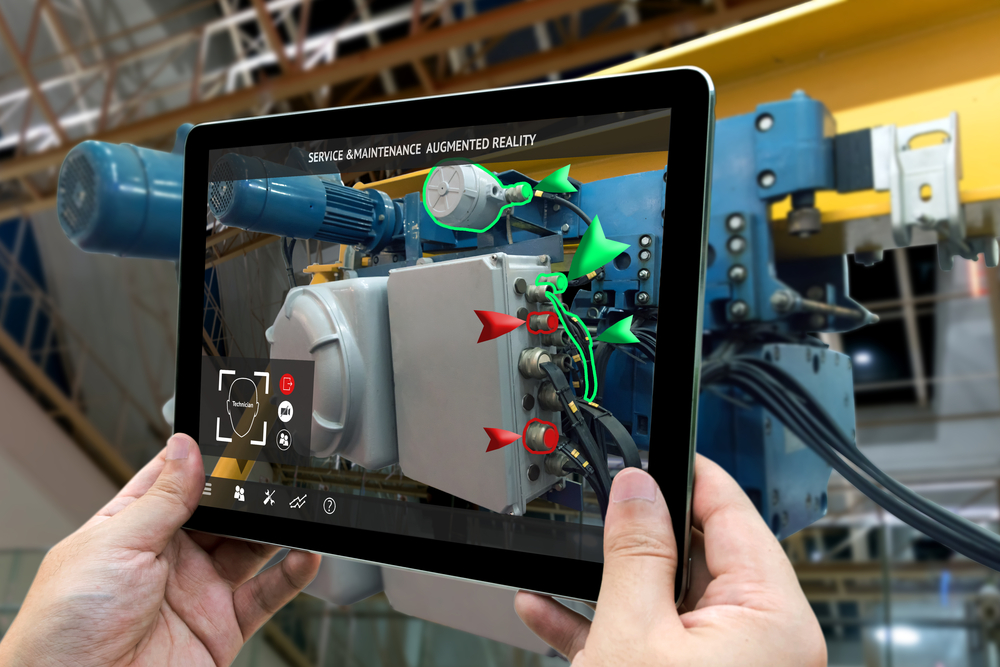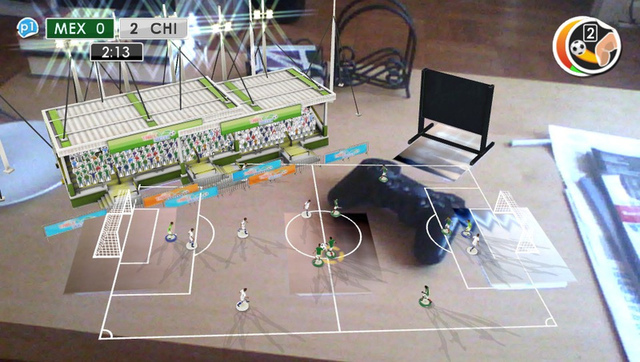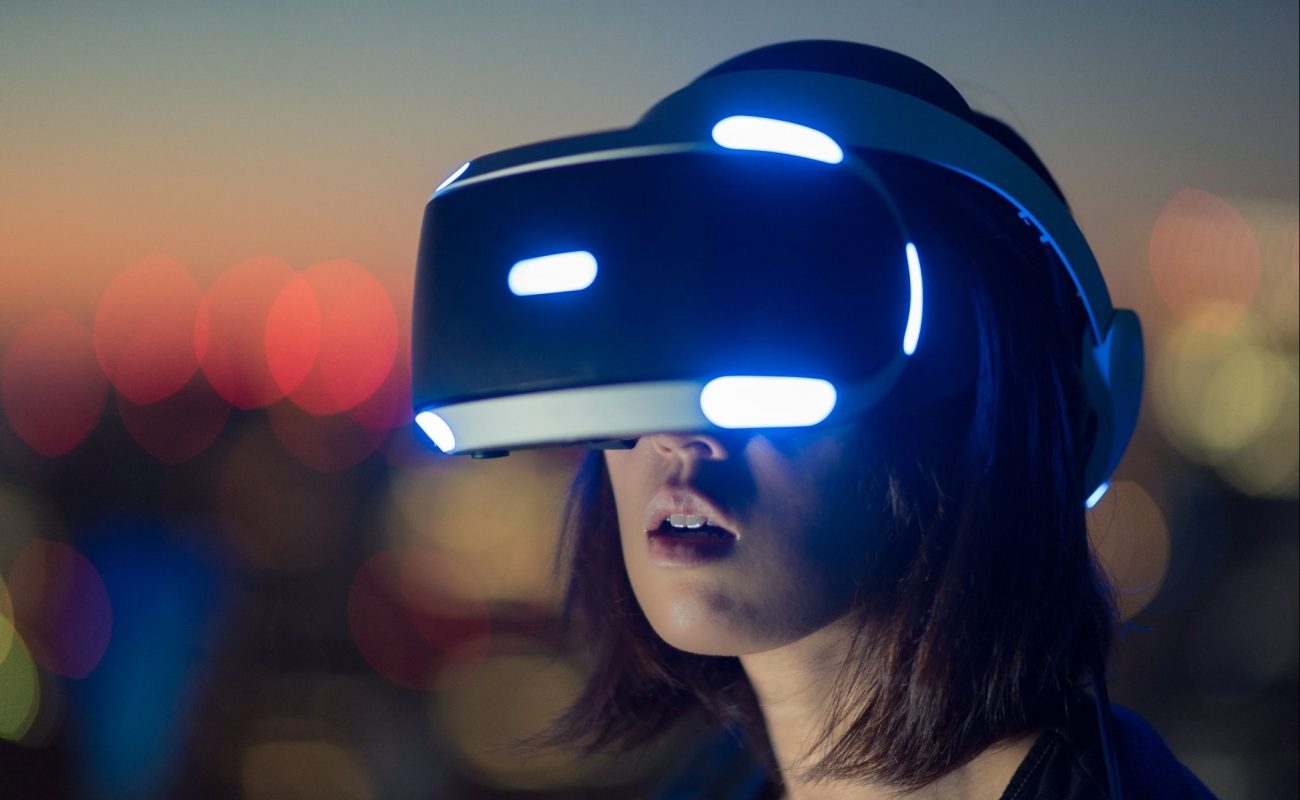Most people first experienced augmented reality (AR) by playing games on their mobile devices, possibly hunting cute Pokémon monsters. However, it would be a mistake to think of AR merely in terms of entertainment. AR’s future will be about supporting production and marketing, and it will soon reveal its ability to drive innovation in architecture and other sectors and industries, with the operative word “soon.”
AR blends digital reality with the physical. Images of the world around us are recorded by a camera and synchronized with computer graphics and 3D animations. The idea is to make the digital and physical worlds appear as one. In contrast to virtual reality, which immerses users in a 3D simulation while detaching them from the physical world, AR knits the two together. And all one needs to navigate AR is a smartphone or special glasses.
Here’s how it will work: Put on the special goggles (which in time will become less conspicuous and, eventually, indistinguishable from ordinary glasses), or launch an AR application on your smartphone, and go for a walk. As you wander along, the names of the stores, restaurants and companies you pass, including any relevant sales and promotions they create, will pop up, displayed in the goggles. Electronic avatars will greet you and usher you into their stores and cafés. Or, launch an electronic translator integrated with the AR app, point your smartphone at objects around you, and reveal their names and natures. The possibilities are endless. AR adds a new layer of information to reality, enriching your experience of the world, and expanding your knowledge of… everything.
Already, most inquiries regarding the potential of AR come from architectural firms, which stand to benefit enormously from spatial simulations. Industry can use the new technology to assemble multiple components. The possibilities certainly do not escape marketers, who note AR’s potential to revolutionize product display. Shoppers could learn about the chemical composition of cosmetics just by looking at them. Wondering whether that jacket will look good on you? Point your smartphone at it and watch a virtual model wear it. AR is the ultimate customer-facing and consumer-enabling technology.
And compare an employee using a traditional manual with one using AR. The employee is repairing a device, looking down (and away from the device) at the manual. The employee with AR is wearing goggles that display the device schematics and all the information needed for its repair. The man who uses AR technology is much more efficient, saving time, cutting costs, doing a faster, better job.
Businesses would be interested in that, wouldn’t you think?

An example of AR used for periodic inspections of a production line
The hard road to perfection
It has taken AR years to make its way out of the labs. There were problems. A year ago, I described the tribulations of Google Glass, which Google hoped would become the first mass-produced device to merge the digital and physical. The goggles were intended to enable wearers to access an internet browser, watch videos, and supply them with massive amounts of information. However, the project hit lots of snags. The goggles tired the eyes very quickly. Legal concerns arose over privacy issues relating to the use of the camera. People did not take well to the headset design. Battery life was a problem, and the field of view left much to be desired.
Tom Emrich, a founding partner of the Super Ventures fund dedicated to new technologies, saw the problem as more human than technological. “For this new wave to be truly immersive, it is critical for digital solutions to bring these aspects of the human experience into the mix to interact with virtual content as if it was the real world. “In other words, for people to adopt AR broadly and enthusiastically, the product must be perfect. And it still isn’t. Indeed, the visual experience has made many viewers uncomfortable.
But engineers are working on that. Last year, Apple’s Arkit hit the market. Arkit is a kit of tools designed for developers that helps scale objects superimposed on camera images (human figures, inanimate shapes, infographics, graphics) and embeds them more naturally in the reality captured by the camera. IOS11 users can now download AR-enabled applications and games.
Although developers continue to face significant challenges, every year brings more progress. Leading tech companies are not giving up on AR. On the contrary, they are competing fiercely. Along with the usual suspects, hosts of start-ups are jockeying for their slice of the AR pie. A recently unveiled technology placed virtual images on contact lenses.It remains to be seen whether that will fly.
Don’t show me dragons
Investors and technologists are split between AR skeptics and enthusiasts. Borealis Ventures’ Managing Director Jesse Devitt is skeptical. “Stop showing me the dragons,” he says. “It’s cool the first time you see it; by the twentieth dragon it gets pretty old. Show me something useful in AR/VR. That’s a lot cooler.Just because you can make something visually stunning in AR/VR doesn’t mean you’re going to raise money.”
The enthusiasts stress AR’s potential to promote products in new, vivid ways, help design new ways of learning, facilitate the work of experts, and save companies money.
That promise has encouraged the giants — Microsoft, Apple, Facebook, Google, and Amazon – to chase the AR dream. And many investment funds in the United States and Asia have been financing AR start-ups. Techcrunch reported that Apple invested $30 million in the start-up Vrvana (which has been working on AR goggles) last November. The idea is to launch the goggles by 2020.
And Apple’s competition is wasting no time. Facebook bought goggle-maker Oculus Vendor for $2 billion – one in a series of eleven AR-focused acquisitions by Mark Zuckerberg’s company. Google has done the most to bring the technology into the mainstream by launching Google Cardboard, which relies on a smartphone placed inside a viewer. Another Google project, the Tango, still in development, is an indoor navigation and 3D mapping platform.
A report by Digi-Capital, which specializes in AR/VR, shows a significant upswing in investment in both. In 2016, companies poured $2.3 billion into AR/VR development, three times more than in 2015. In fact, 2016 was a critical year for the industry thanks to numerous acquisitions, not to mention the Pokémons. Digi–Capital predicts the AR/VR market will be worth $100 billion by 2021. McKinsey cites Goldman Sachs predicting that the industry’s worth will be just slightly less, an estimated $95 billion, by 2025.

Example of Vita’s “augmented reality” game
The end of computers?
Will AR render conventional interfaces obsolete, relegating them to future museums of technology? Will screens and keyboards vanish? Microsoft and Facebook have said that the smartphone, laptop and TV displays to which we’ve grown accustomed will soon become relics. We will always be hands-free, using our eyes and imaginations to operate our devices. For now, AR development is expected to remain based on the smartphone. For how long, it’s difficult to say. Will we ever be able to control all our information flows by moving our eyes?
AR development will require a great deal of funding, and, before the AR future arrives, a lot of improvement. It is equally unclear whether users will accept the glasses – the central piece of the AR puzzle. The key stumbling block to the technology’s development may simply be human psychology. Do people want to wear devices on their faces? Are they okay with knowing they may be recorded when someone gazes at them through technologically-enabled lenses?
It’s possible AR may not become a universal or commercial technology. Instead, it may be embraced only by a handful of specialized industries (architecture, manufacturing, marketing) while individuals will show little or no interest in experiencing reality with a digital, virtual overlay.
But no matter which scenario comes to fruition, or how long it will take, I am confident that the potential of AR technology is truly enormous.
Related articles:
– Artificial intelligence is a new electricity
– How I love to get scared in movie theatres – my favourite Artificial Intelligence films
– Only God can count that fast – the world of quantum computing
– Machine Learning. Computers coming of age
– The invisible web that surrounds us, i.e. the Internet of Things
– Augmented Reality. Seeing more than just a Pokemon
A conceptual view of how augmented reality may be used in the future.










JohnE3
Amount of potential applications of this technology is huge and impact on our society amazing
DDonovan
The most interesting ethical dilemmas specifically concern robotization using AR/VR. The questions are analogous to those asked with regard to autonomous vehicles. Today’s robots are only learning to walk, answer questions, hold a beverage bottle, open a fridge and run. Some are more natural than others at these tasks. Robots will not only replace us in many jobs. They can really be helpful, in e.g. taking care of the elderly, where constant daily assistance is required.
TommyG
The revolutionary impact of its market launch could be felt within a matter of months. Meanwhile, for one reason or another, it was still acceptable in a typical 1990s business to have to wait years to see the desired effects of managerial decisions. Wasn’t there a contradiction in the thinking about management? After all, mobility and flexibility, which is highly valued by any worker, should be equally appreciated by organizations. Especially those that aspire to succeed in the digital economy era.
TomCat
It’s not only about Pokemones. There is much more to offer
Adam Spark Two
Nice read. Good arguments. Another good article. Well done Sir 🙂
Norbert Biedrzycki
Thank you very much
Check Batin
That’s so freaky and bizarre and scary. I’m only on this sub to see how terrible our future looks and this pretty much sums it up.
DCzaj
https://www.ft.com/content/b29a3106-9761-11e5-9228-87e603d47bdc
The other night I found myself in the emergency room of a Manhattan hospital. As I waited to be seen, I got chatting with a fellow patient, an orthodox Jewish man, in the hat and everything.
These guys live in almost Amish-like isolation from a lot of modern life, but he asked me, as people do, what the next big technology thing will be.
I said VR. “What’s that?” he asked. I did my best to describe it. He stroked his beard as if he was contemplating a Talmudic paradox.
“I don’t know technology but surely that changes everything?” he said eventually.
He even tipped his hat to scratch his head and ponder further.
Andrzej44
Combine this with quantum computing and you will get TNT. IBM sees quantum computing going mainstream within five years
IBM predicts five technologies that will change the world in the next five years.
From quantum computing to “unbiased” artificial intelligence, CNBC breaks down what the predictions will mean.
https://www.cnbc.com/2018/03/30/ibm-sees-quantum-computing-going-mainstream-within-five-years.html
Jack666
I love it! I use it almost every day and it is such a damn good time!
Headsets going wireless is the next big thing, then I hope to see some form of affordable treadmill type system for locomotion in games.
While buying our house, one of my must haves was a good VR room, and I wouldn’t be surprised if that becomes more of a desire and selling point in the future.
Mac McFisher
For some reason, I read the title as:
A augmented reality future with woman playing backgammon in the background.
Kept trying to look closer at the image to see if she was playing solitaire or something on the computer…
Simon GEE
That entire article has one sentence relating to the title:
“Augmented reality will require new and upgraded broadband networks, both wired and wireless, that will be capable of satisfying future bandwidth needs of the technology, which consumes massive amounts of data.”
The rest just states different ways industries are planning on using AR.
SimonMcD
Call me crazy…and maybe not the next big trend, perhaps more in the future, but I suspect that make-up for men will one day be the norm. Think about it, it’s 50% of the market completely untapped! Women completely rely on it, men are increasingly becoming more fashionable, gender barriers are changing. One day someone in the fashion and make-up industry is going to say “how can we make this a thing for men?” and next thing you know, men will be applying foundation, a light blush and a little mascara every day just to make their eyes pop.
Norbert Biedrzycki
I won’t be one of them. I do actually believe in this technology.
Mac McFisher
Which it does. You’re forgetting that current multiplayer gaming is built to accommodate shitty internet. To really get into a decent online virtual world, massive amounts of data needs to uploaded and downloaded at the same time, more than a gig, much more. Essentially 8k on a 2d screen is a lot less than 8k in a 360 environment. We’re not going to see good quality games unless we see good quality internet.
AdaZombie
What would be a future with AR? The trouble with predicting the future is we’re typically way off in two directions, because we don’t know what we don’t know.
First we vastly overestimating things, like flying cars or applications of AR in this tech. We’ve been predicting flying cars for over 100 years. Maybe in another 100 they will arrive (driverless cars are step one, because imagine 100MM people trying to be pilots simultaneously). It’s easy to say, “Imagine a car, but flying!” Everyone can imagine that, so we collectively imagine it and pretty soon it feels like it’s right around the corner. Today everyone can imagine 3D printers magically creating everything we want at the push of a button. Let’s wait and see 🙂
Then on the other end, nobody could predict the effect of the internet, or penicillin, or the washing machine (which freed women from hours of housework, leading to women in the workforce, and so on). The most disruptive tech is unimaginable until it exists, and even when it exists nobody realizes just how life-changing it is at first. We look back and realize history has happened, but at the time it’s incredibly hard to see.
That said, the next big thing is something that probably feels a trivial right now. I think it has to do with the globalization of culture, via the internet, which exposes people to more ideas and information than ever before. Even the developing world is being connected via mobiles, and prices are dropping at an exponential rate.
National identities will blur, racial identities will blur, as will gender. What feels like crazy tumbrina nonsense today will perhaps be, in hindsight, the beginning of a new era of human relations where we’re more alike than ever before.
Or, people will filter-bubble themselves into crazy cliques and battle it out like the old times 🙂
Norbert Biedrzycki
When I think about flying cars I think about people who shouldn’t drive regular cars.
Mac McFisher
I think you’re a bit confused about what kind of data a game client sends and receive from servers. There’s typically only coordination data, no assets needs to be streamed as a local version already exists.
There’s no need to stream video for multiplayer gaming. Sure if twitch streaming of VR becomes a thing that’s needed but that’s an entirely different thing.
Tom299
I’m imagining an industry of VR trips to real outer space where you pilot a device in Earth’s orbit and you fly around as if you are Superman. The pilot would only have control of the device within a specific ‘boundary’, but it would be large enough to satisfy most people’s curiosity. Call the areas quadrants or whatever is catchy.
And while you’d still have your conspiracy theorists that will argue ‘”space isn’t real”, I think that kind of experience could bring about a new positive perspective about Earth to masses of people.
ZoraBora
What if you had different bots that were capable of different tasks and could act upon and alter the terrain? Have dump trucks, excavators, and other minor construction/exploration related bots. A user could purchase an allotment of time to control the machine. Have a free-form area where people could just mess around with the robots for a time, then eventually implement a goal system to actually work toward accomplishing real tasks, such as working together to clear a landing pad for future missions and supply drops, or explore a crater, or mine for minerals that could be then hauled back to a factory and reprocessed into fuel or other useful materials…
In short, we don’t need to develop super smart AI to control robots on the moon/mars/asteroids; we just need to leverage the cumulative efforts of interested people with time to kill.
Adam Spikey
AR isn’t limited to real reality. For example, eventually SteamVR will support AR development in VR.
John McLean
The Next Trillion Dollar Industry? Augmented Reality with Jay Samit
https://www.youtube.com/watch?v=ETtUxcXAaWY
Norbert Biedrzycki
Very interesting. Thank you for posting
Karel Doomm2
Many people deving for AR right now are indie devs and small studios, so maybe they don’t have the resource to pull out all the stops on optimized assets creation.
But it’s mostly the processing. The SLAM based tracking in ARKit and ARCore are using up a lot of computation resources. Furthermore, this computation really heats up the device really quickly, meaning the system will throttle the processor, meaning the tracking will start to break down completely. For the foreseable future it’s going to be back to balancing number of objects to the renderer and the complexity of those object. Also smaller and simple textures.
One more thing, ARKit is available to the iPhone 6S as well as the iPhone X. Many simple things barely run on the 6S. More devices means having to support those devices. Just like mobile web.
DCzaj
Mobile games are capable of high poly models with nice textures and fancy shaders, so how come every AR app uses low poly models? Is it because the tracking takes all the processing power? Or is it because the developers don’t have the budget to hire skilled game artists? I don’t mean to offend anyone, I’m just genuinely curious.
Norbert Biedrzycki
I think there is more applications of this technology Tham gaming industry
Don Fisher
I’ve just gotten into AR development using ARKit and Unity. I’ve been working on a few small demos that start off with premade objects in the scene. One thing I’ve noticed is that these objects often times drift forward with the camera as I get closer to them. Eventually it’ll “stick” and stay in place, but I never really know why it does that and how to prevent it.
Placing objects on flat surfaces is fine, but anything that floats or is premade has this issue initially. Is this just a common thing to expect or is there some way to ensure it doesn’t drift? I know there will be some movement, it won’t be 100% accurate, but moving around a scene is a bit of a pain initially as objects get pushed around for too long.
Don Fisher
https://www.youtube.com/watch?v=i7O_gS9c74Q
Extremely cool
Norbert Biedrzycki
🙂